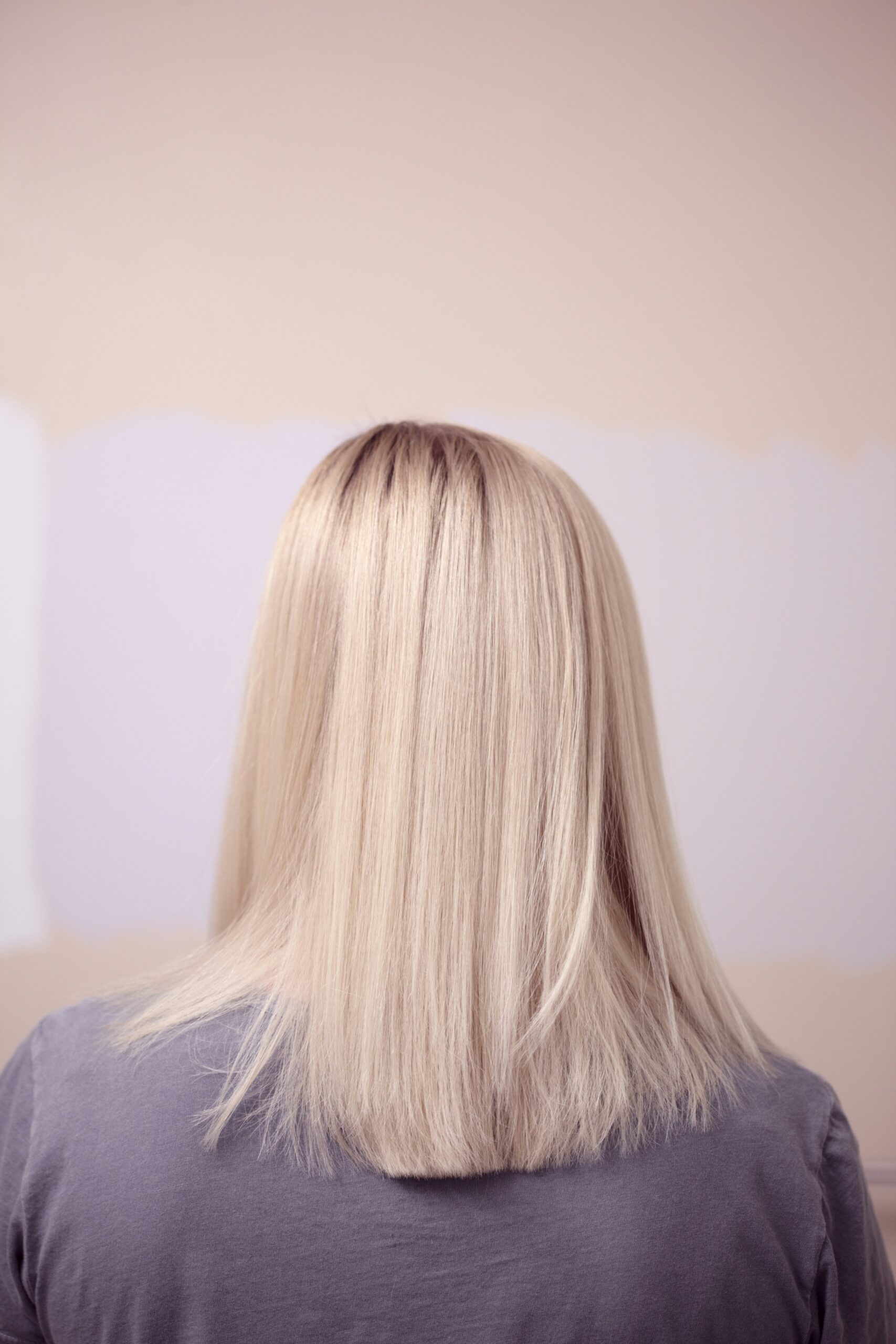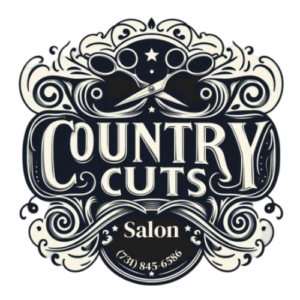Introduction to Pre-Coloring Hair Preparation
Coloring your hair can be an exciting way to transform your look, but it’s important to understand the significance of pre-coloring hair preparation. Properly preparing your hair before applying dye is crucial for several reasons. Firstly, it can help achieve a more even and vibrant color, allowing the dye to penetrate uniformly from root to tip. This process minimizes the risk of patchy or uneven color, which can often result from hasty or insufficient preparation.
Moreover, following a pre-coloring routine plays a vital role in preventing damage to your hair. Hair dye contains chemicals that can potentially weaken and dehydrate your strands, making them more susceptible to breakage. By taking the time to prepare your hair adequately, you can help fortify it against the harsh effects of these chemicals, preserving its health and integrity. This not only contributes to the immediate end results but also ensures that your hair maintains its strength and luster over time.
Lastly, thorough pre-coloring preparation is linked to the longevity of your new hair color. By ensuring that your hair is in optimal condition before dyeing, you enhance the color’s ability to adhere and last longer. This reduces the frequency of touch-ups required, saving you both time and resources in the long run.
In the subsequent sections of this blog, we will delve deeper into essential pre-coloring tips and routines. From clarifying treatments and deep conditioning to strand tests and choosing the right products, you will learn practical strategies to prepare your hair effectively for coloring. By following these guidelines, you can achieve the best possible results, ensuring your hair looks and feels fantastic after the coloring process.
Assess Your Hair’s Current Condition
Understanding your hair’s current state is a crucial step in preparing for a successful coloring session. Whether your hair is natural, chemically treated, or subjected to heat styling, knowing its type, texture, and overall health is essential for achieving the best results. Each hair type responds differently to color treatments. For instance, curly hair may need additional moisture treatments to prevent dryness, while fine hair can be more delicate and require gentler handling.
Begin by identifying your hair type—whether it is straight, wavy, curly, or coily—and its texture, which ranges from fine to medium to coarse. This knowledge will guide you in choosing the right products and techniques for your pre-color routine and beyond. Additionally, consider any existing damage due to previous coloring, chemical treatments like perming or relaxing, or consistent exposure to heat styling tools. Damaged hair may be more porous, causing it to absorb color quickly but also potentially leading to uneven or less vibrant results.
To gauge your hair’s health, conduct a simple strand test by checking for elasticity, strength, and porosity. Gently pull a strand of hair; if it stretches and returns to its original state, your hair’s elasticity is good, whereas breakage or brittleness indicates weakened strands. A cuticle check involves sliding your fingers up a hair strand towards your scalp; if the cuticle feels rough and catches, it may be damaged and more porous. Porous hair absorbs moisture and color more rapidly but can also lose it quickly, which might necessitate more frequent touch-ups.
If you encounter any signs of significant damage, such as excessive dryness, breakage, or split ends, consider consulting a professional stylist. They can provide personalized advice and treatments to restore your hair’s health before the coloring process. Expert guidance ensures that your hair can handle the added stress of coloring, leading to a more vibrant and lasting outcome.
Choose the Right Color and Products
Selecting the appropriate hair color and products is a pivotal step in achieving the desired outcome while ensuring the health of your hair. To begin with, consider your hair type, current color, and the look you wish to achieve. For those with fine or damaged hair, it’s generally recommended to avoid high-ammonia products, as these can lead to further dryness and breakage. Identifying your undertones can also guide you to a color that complements your natural complexion.
Permanent dyes are long-lasting and offer the most dramatic change, penetrating the hair shaft to alter the color permanently. They are best suited for those looking for a significant change or to cover grey hair fully. However, due care must be taken to select high-quality formulations to mitigate potential damage. Semi-permanent dyes, on the other hand, are less invasive, coating the hair rather than altering its structure. These dyes are ideal for subtle changes or refreshing existing color and typically wash out after six to twelve washes.
Temporary dyes, including rinses and sprays, are the least damaging as they merely sit on the hair’s surface. These are perfect for experimental looks or one-off events, delivering color that washes out after one or two shampoos. Balancing your desired longevity and intensity with the health needs of your hair is crucial in this selection process.
Equally important is choosing high-quality products. Superior brands often include nourishing ingredients such as keratin, argan oil, or vitamins that can aid in preserving the health and shine of your hair. Avoid products with harsh chemicals like parabens and sulfates, as these can strip hair of natural oils, leading to dryness and brittleness.
In conclusion, carefully selecting the right color and products tailored to your hair type and desired outcome lays the foundation for vibrant, healthy-looking results. This ensures that while achieving your new look, your hair remains strong and resilient.
Deep Conditioning and Hydration
Deep conditioning and hydration play a vital role in preparing your hair for coloring, ensuring that it remains healthy and vibrant post-treatment. A robust pre-coloring regimen involves using deep conditioners and hair masks designed to strengthen and moisturize the hair. These treatments work to fortify the hair shaft, making it less susceptible to damage during the coloring process and enhancing the overall appearance and longevity of the color.
When choosing a deep conditioner or hair mask, look for products that contain nourishing ingredients such as argan oil, shea butter, and keratin. Argan oil is known for its moisturizing properties and ability to restore elasticity, while shea butter is excellent for providing deep moisture and softness. Keratin, a protein naturally found in hair, helps to repair and strengthen damaged hair, making it more resilient.
Popular deep conditioning products include the Olaplex No. 3 Hair Perfector, which rebuilds broken bonds in the hair, and the Briogeo Don’t Despair, Repair! Deep Conditioning Mask for intense hydration and strength. Alternatively, DIY options like coconut oil or avocado masks can also provide substantial benefits. Whether you prefer commercial products or home remedies, consistency is key.
Incorporate deep conditioning treatments into your routine at least once a week in the month leading up to your coloring appointment. This timeline allows your hair to absorb the benefits of the treatment fully. On the wash day before coloring, consider using a hydrating hair mask to ensure your hair is at its optimal condition. Additionally, avoid washing your hair for 24-48 hours before applying color, as this helps to preserve natural oils that protect the scalp.
By diligently maintaining a deep conditioning and hydration routine, you significantly enhance your hair’s ability to withstand the rigors of coloring. Not only does this preparation promote healthier hair, but it also contributes to more vibrant and long-lasting color results.
“`html
Clarify and Detoxify Your Hair
Before embarking on the hair coloring journey, it is paramount to ensure your hair is free of any build-up, excess oils, and impurities. This step is an essential preparation for achieving even color application and vibrant results. One of the most effective ways to clarify your hair is by using clarifying shampoos. These specially-formulated shampoos are designed to deep-clean your hair, removing residues from styling products, environmental pollutants, and hard water minerals that regular shampoos might leave behind.
Using a clarifying shampoo typically involves lathering up the product and letting it sit in your hair for a few minutes before rinsing thoroughly. For those with dry or sensitive scalps, it’s advisable to follow up with a hydrating conditioner to maintain moisture balance. Alternatively, detox treatments can play a crucial role in preparing your hair for coloring. Detox treatments often include ingredients like activated charcoal or clay, which can draw out impurities and provide a deep cleanse.
A thorough detox not only removes build-up but also aids in balancing the scalp, making it an ideal canvas for the dye to adhere properly. This pre-coloring preparation ensures that the color pigments distribute evenly across the hair strands, minimizing the risks of patchy or inconsistent results. Moreover, detoxifying your hair can improve overall hair health, leaving it more receptive to color uptake and reducing the potential for damage during the coloring process.
In summary, taking the time to clarify and detoxify your hair before coloring is an indispensable step. This practice not only enhances the effectiveness of the dye but also contributes to healthier and more manageable hair. By investing in a clarifying shampoo or a detox treatment, you are setting a strong foundation for achieving the best possible coloring outcome.
“`
Trim Split Ends and Maintain Hair Health
Maintaining the health of your hair is crucial when preparing for coloring. Trimming split ends is a key step to ensure that your hair absorbs color evenly and remains vibrant. Split ends can lead to further hair damage and breakage, compromising the final results of your coloring process. Regular trims help in keeping the ends of your hair healthy, allowing the color to take more uniformly.
Before heading to your coloring appointment, it is advisable to get a haircut or at least a trim. This eliminates any damaged sections of your hair, ensuring that the strands are in their best possible condition to receive the color. A well-maintained haircut helps maintain the structural integrity of your hair by reducing the risk of uneven color patches and breakage, which can otherwise ruin the aesthetic appeal of your new hair color.
Regular care practices are essential in preserving hair health, especially when planning to color your hair. Incorporate a balanced hair care routine that includes moisturizing shampoos, conditioners, and hair masks to keep your hair hydrated and strong. Deep conditioning treatments once a week can infuse the hair with essential nutrients, keeping it resilient against the potential drying effects of hair color.
In addition to trims and regular conditioning, it is important to reduce the use of heat-styling tools such as flat irons and blow dryers. Excessive heat can weaken hair strands, making them more susceptible to damage during the coloring process. When using heat tools, apply a heat protectant spray to shield your hair from high temperatures.
Lastly, consider using natural oils like argan oil, coconut oil, or jojoba oil as pre-color treatments; these oils can enhance hair strength and shine, providing a solid foundation for the coloring treatment. Keeping hair in optimal condition ensures a more successful and lasting hair coloring result.
Avoid Washing Hair Right Before Coloring
When preparing your hair for a coloring session, one essential tip is to avoid washing your hair right before applying the dye. Allowing your hair to rest for a day or two without washing can significantly impact the coloring outcome. Natural oils produced by the scalp play a crucial protective role; they shield both your scalp and hair strands during the dyeing process. These oils can act as a natural barrier, reducing the possibility of irritation while helping the color adhere more uniformly.
Washing your hair too close to the coloring appointment may strip away these beneficial natural oils, leaving your scalp more exposed and potentially sensitive to the chemicals in hair dye. Additionally, freshly washed hair might make it harder for the dye to bond effectively, particularly when aiming for a consistent color and finish.
However, it is essential to recognize that this guidance might not apply universally. For those with excessively oily hair or if heavy products have been used that could impede the dye’s penetration, a light wash might be necessary. In such cases, opt for a gentle sulfate-free shampoo that won’t strip away all natural oils. Also, individuals with scalp conditions or sensitivities should consult their hairstylist or dermatologist for personalized advice on pre-coloring preparations.
Overall, giving your hair an oil buffer can make a noticeable difference during the coloring process. This practice supports overall hair health and ensures the best possible result from your coloring endeavors. Maintaining this balance will prepare your hair to accept the new color more smoothly, safeguarding the scalp in the meantime.
Before embarking on the journey of hair coloring, it is paramount to perform both a strand test and an allergy test. These preliminary steps are not mere recommendations; they serve as fundamental safeguards to prevent adverse reactions and to ensure that the chosen color meets your expectations.
Conducting a Strand Test
A strand test helps you preview the final color and how your hair will react to the dye. To perform a strand test, select a small, discreet section of hair, typically from the underside. Apply the color to this section according to the instructions on the dye kit. Let the dye process for the prescribed amount of time, then rinse and dry the highlighted strand.
Evaluate the color result once the strand has fully dried. If the shade is too light or too dark, adjustments to the processing time or to the color formula may be required. Additionally, observe the hair condition post-coloring. If the strand feels significantly damaged or dry, it might be beneficial to reconsider the color choice or prepare an intensive treatment plan to fortify your hair before the full application.
Performing an Allergy Test
The allergy test is critical for identifying potential allergic reactions to the hair dye. To execute this test, prepare a small quantity of the dye mixture as directed. Apply a dab of the mixture behind your ear or on the inner elbow. These areas are particularly sensitive and commonly used for allergy assessments.
Leave the dye on the skin for 24-48 hours, ensuring the area remains dry. If no irritation, redness, swelling, or itching occurs, it is safe to proceed with the coloring process. Should any signs of an adverse reaction appear, it is advised to abstain from using that specific dye and potentially seek an alternative product that is less likely to provoke a reaction.
By faithfully performing both a strand and an allergy test, you protect yourself from unwanted allergic responses and ensure the color you desire matches your expectations, resulting in a vibrant, satisfying hair transformation.







